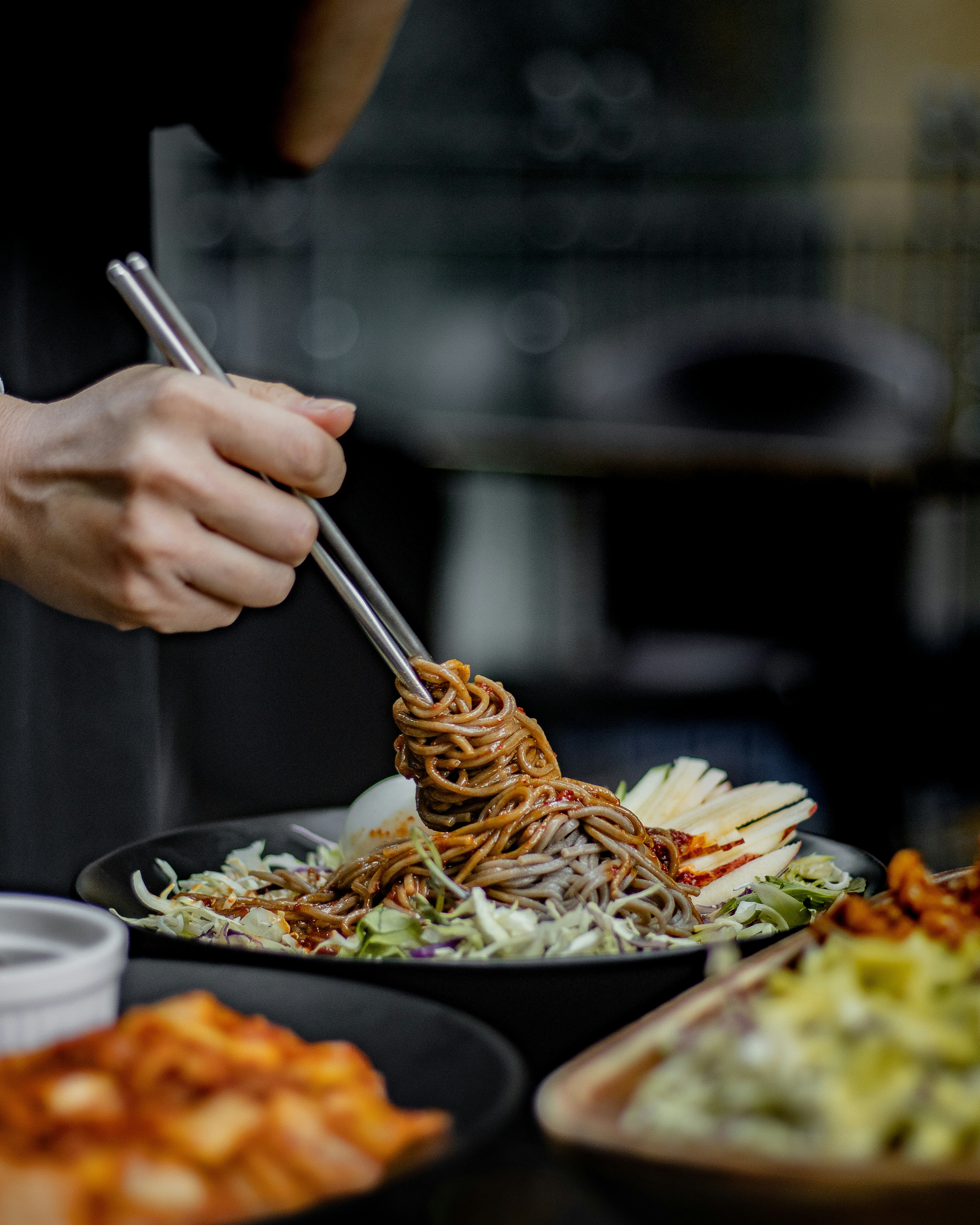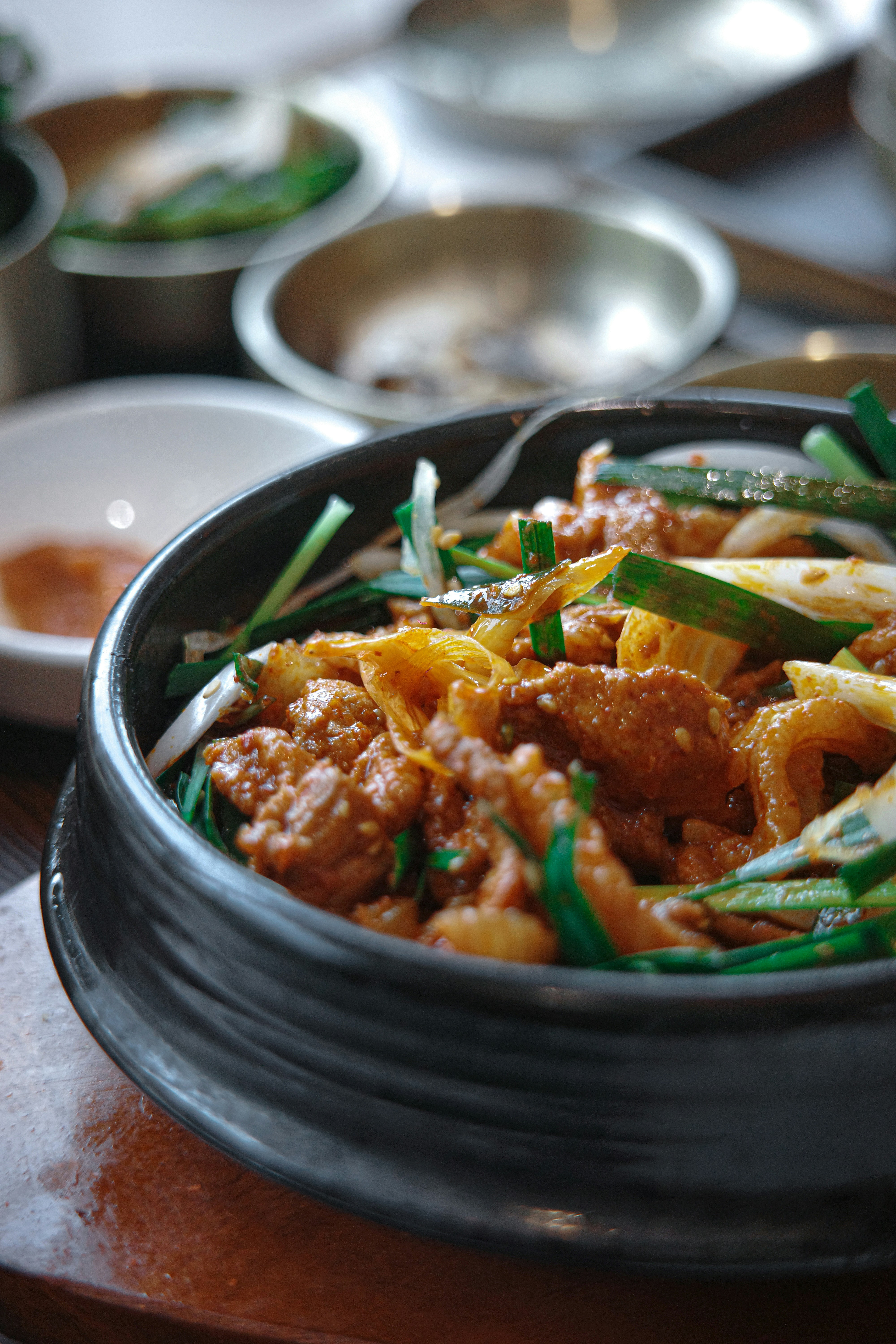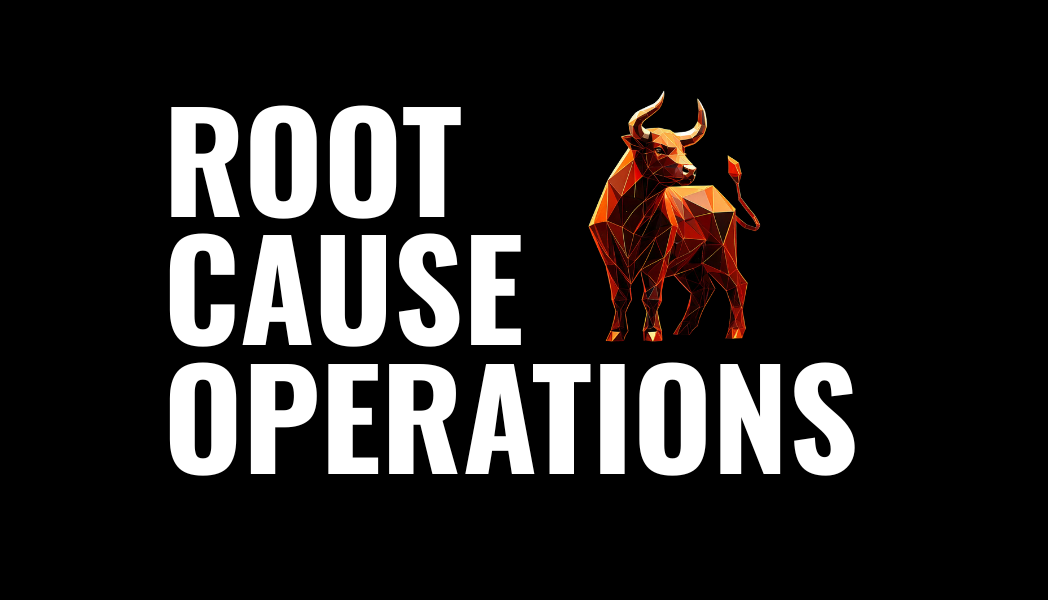CRISIS TO CASH FLOW FOR RESTAURANT GROUP


The day California shut down its restaurants in March 2020, Tony Mendez didn't panic. He laughed. Not because he found global catastrophe amusing, but because after fifteen years in the restaurant business, he'd finally found a perfect excuse to tell his investors what they didn't want to hear: the business model they'd poured $5 million into was fundamentally broken.
"I remember thinking, 'well, at least now it's not my fault,'" Mendez told me, sitting in what's now the bustling flagship location of his restaurant group in San Francisco's Chinatown. "Before COVID, we were already losing money. After COVID, I could blame the virus. It was almost a relief."
That strange moment of liberation, finding freedom in disaster, would become the turning point in what has since become one of the most fascinating business transformation stories to emerge from the pandemic. While 110,000 restaurants across America permanently closed their doors, Mendez's collection of five struggling San Francisco establishments alchemized a -4% margin business into a 16% margin money machine in the middle of the worst crisis the industry had ever seen.
The Financial Autopsy
Chef Eli doesn't look like your typical operations consultant. With tattoo sleeves crawling up his arms, a perpetual five o'clock shadow, and a habit of stepping outside for a cigarette every forty minutes.
"When we first looked at their books, it was f**king suicidal," Eli explains. "They were running a restaurant group with the financial discipline of a drunk college kid with his first credit card. I've seen car crashes that were better organized than their P&L."
The numbers told a clear story:
Food costs at 38% of revenue (industry benchmark: 28-32%)
14 separate vendors supplying mostly identical ingredients at wildly different prices
A bloated menu with 42 items, a third of which sold fewer than 2 plates per day
Labor costs that consistently exceeded budgets by 14%
But the most revealing figure wasn't on any balance sheet. It was in their customer data: the average customer returned only once every 41 days.
"In the restaurant business, that's basically saying your food is forgettable," Eli says, jabbing his finger at a spreadsheet. "Good enough that people don't hate it, not good enough that they crave it. And let me tell you something, nobody ever built a successful restaurant selling food that people don't crave. That's just slow-motion suicide with fancy napkins."
For venture investors, the restaurant business has always been a puzzling paradox. Despite notorious failure rates and thin margins, restaurants continue to attract capital from people who would never touch a manufacturing business with similar financial characteristics. The reason?
"Restaurants are emotional investments," explains Sandra Liu, a Bay Area Angel Investor who specializes in food and hospitality startups. "People invest in restaurants for the same reason they invest in movies, they want to be part of something glamorous and tangible."
But this restaurant group's investors had reached the limits of glamour. They were on their third capital infusion with deteriorating metrics and the pandemic had just removed any hope of a near-term turnaround. Or so they thought.
The Menu Engineering Massacre
The first thing Eli's team did wasn't marketing, technology, or a rebrand. It was a ruthless analysis of what people actually ordered versus what the restaurants were trying to sell.
"The menu audit was brutal," Mendez recalls. "Eli basically came in like a tornado. He looked at our menu and said, 'Half this sh*t is never gonna make you money, and the other half you're doing wrong.' He meant all these menu items that our chefs had emotional attachments to but nobody actually ordered."
Eli's team plotted every dish on a matrix showing popularity versus contribution margin. The results were startling: 37% of menu items were both unpopular and unprofitable. Yet they consumed 42% of kitchen prep time and contributed to significant inventory spoilage.
"These restaurants were essentially subsidizing dishes that customers didn't particularly want," Eli explains, his voice rising as he stabs out his cigarette. "It's like if Amazon decided to keep selling products that lost money AND nobody was buying. In tech, that decision would be obvious. In restaurants, chefs call it 'maintaining culinary integrity.' I call it 'setting cash on fire for your own amusement.' Look, I love chefs...they're artists. But artists need boundaries, or they'll paint themselves right out of business."
The menu engineering was merciless. Thirty-seven percent of items were eliminated overnight. What remained were dishes with an average 74% contribution margin. Prep time decreased by 41%. Food waste dropped by 56%. Customers barely noticed the smaller menu. In fact, satisfaction scores increased by 22%.
"When you have fewer dishes, you make each one better," Mendez explains.
"Damn straight," Eli interrupts. "And the dishes that remained were the ones people actually wanted to eat. Look, I'm not here to win culinary awards. I'm here to make sure these kitchens can keep employing people and feeding customers for the next twenty years. That means making money. If a dish doesn't pull its weight financially, it doesn't belong on the menu no matter how pretty it looks."
The Great Vendor Consolidation
In Silicon Valley, "vendor consolidation" is the kind of phrase that makes investors' eyes glaze over. It's operational minutiae, not the stuff of transformational narratives. But for this restaurant group, it represented nearly a quarter-million dollars of instant margin recapture.
"They were buying the exact same olive oil from three different vendors at three different prices," Eli says, pulling at his apron incredulously. "Not slightly different olive oils—literally identical products, same brand, same SKU, price differentials of up to 42%. Who does that? It's like they were trying to lose money! And nobody had bothered to check. They had a g*ddamn Ph.D. running their marketing analytics but nobody watching the basic cost of goods."
Eli's team reduced the vendor count from 14 to 7 and negotiated volume discounts that lowered ingredient costs by an additional 18%. AND the quality of ingredients actually improved.
"We discovered they were making terrible tradeoffs," Eli explains, his voice softening when he talks about food quality. "They'd overpay for commodities like oil and flour, then try to save money by downgrading on signature ingredients like cheese and protein. We flipped that model. Pay commodity prices for commodities, premium prices only for the ingredients customers can actually taste."
What surprised Mendez most was how personally Eli took the food quality issue.
"I thought he was just a numbers guy who'd tell us to buy cheaper everything," Mendez recalls. "But he actually insisted we upgrade our proteins and our produce. He said, 'Look, I'm not letting you serve garbage food to save a few bucks. That's not why I do this. I want these restaurants to serve food I'd be proud to feed my own family.' Behind all the cursing and tough talk, the guy genuinely cares about feeding people well. He just believes you can do it without financial suicide."
The savings allowed the restaurants to upgrade key ingredients while simultaneously lowering food costs from 38% to 29% of revenue, an almost miraculous shift in industry terms.
The Digital Transformation Nobody Asked For
Before COVID, the restaurant group had a negligible digital presence, just 842 followers across all social platforms and online ordering that accounted for only 4% of sales. Mendez, like many restaurateurs of his generation, believed that "real restaurants" focused on in-person experiences, not Instagram likes.
The pandemic forced a radical pivot. With dining rooms closed, digital was the only channel.
"We told Tony, 'Your food is now competing with Netflix,'" Eli recalls, pacing energetically around the empty dining room. "People aren't choosing between your restaurant and another restaurant anymore. They're choosing between ordering your food or cooking at home and watching 'Tiger King.' That's a completely different competitive landscape. And you know what? Your sorry-a** Instagram account with blurry food photos isn't gonna cut it against Joe Exotic. We gotta get serious about this digital sh*t or we're dead."
Eli's team implemented a three-prong digital strategy:
First, they created what Eli colorfully termed "camera bait"—dishes specifically designed to be Instagram-worthy, with dramatic presentation that practically begged to be photographed. They identified micro-influencers in each restaurant's neighborhood and offered free meals in exchange for content creation.
"I hate influencer culture as much as the next person," Eli admits, "but I hate bankruptcy more. Sometimes you gotta dance with the devil to keep the lights on."
Second, they shifted their content strategy from generic food photos to behind-the-scenes stories focused on staff, suppliers, and Mendez himself.
"People couldn't come to the restaurant, so we brought the restaurant to them," explains Mendez. "We turned our chefs into characters in an ongoing story."
"People connect with people, not food pictures," Eli adds. "We needed to show the human side of these restaurants—the immigrants working their asses off in the kitchen, the farmers growing the produce, the stories behind the dishes. That's the stuff that makes people care whether you survive or not."
Third, they implemented a contactless ordering system that reduced front-of-house labor costs by 23% while actually improving service speed and accuracy.
"Look, I get it," Eli says with unexpected gentleness. "Nobody in this industry signed up to run a tech operation. These folks want to cook food and make people happy. But adapt or die, right? The pandemic just accelerated what was already happening. The restaurants that couldn't figure out digital were already on their way out. COVID just pressed fast-forward."
The results defied industry trends. While restaurant volume nationwide was down 64%, daily orders at Mendez's establishments increased by 218%. Social following exploded from 842 to 47,000 in six months. Customer return frequency, that critical measure of how memorable your food is, jumped from every 41 days to every 16 days.
The VC Lesson Nobody Wanted to Learn
The restaurant group's transformation contains a lesson that many venture investors find deeply uncomfortable: sometimes the most valuable improvements are about operational blocking and tackling that creates cash flow from existing assets.
"The venture model trains everyone to think that success looks like a hockey stick graph of new customer acquisition," says Sandra Liu. "What this restaurant group proved is that you can completely transform a business by focusing on the customers and assets you already have."
Eli puts it more bluntly: "All these VCs are chasing unicorns while ignoring the cash cows right in front of them. They'd rather bet on some 22-year-old's fantasy about flying cars than invest in fixing the boring shit that actually makes money. It drives me nuts."
The financial impact was staggering. In an industry where profit margins typically range from 3-5% in good times, this restaurant group now consistently generates 16% margins—more than three times the industry average. And they achieved this during the worst market conditions in a century.
For Mendez, the most surprising outcome was psychological. "Before, we were always chasing growth, opening new locations, adding menu items. We were on the classic startup treadmill," he says. "Now we're obsessed with optimization. How do we make each dish a little better, each customer interaction a little more memorable, each dollar work a little harder?"
This shift in mindset represents a path that many venture-backed companies eventually need to travel but few are prepared for.
"In the VC world, we talk a lot about product-market fit," Liu observes. "What we don't talk enough about is operational-financial fit and building an operation that's financially self-sustaining rather than dependent on continuous capital infusion."
Eli, between puffs on what must be his tenth cigarette of our interview, grows uncharacteristically philosophical. "Look, I'm not against growth. Growth is great. But growing a business that loses money is just creating a bigger problem. It's like having a boat with a hole in it, and your solution is to get a bigger boat with a bigger hole. At some point, you gotta fix the damn hole."
The Final Calculus
The most remarkable aspect of this transformation isn't that it happened, but when it happened. While competitors were hibernating, hoping to weather the pandemic storm, Mendez and his team used the crisis as cover to make radical changes that would have been politically impossible during normal times.
"COVID gave us permission to question everything," Mendez explains. "Before, if I tried to cut a popular but unprofitable dish, I'd have gotten pushback from everyone...the chef, the regulars, the staff. During COVID, everyone understood that survival required sacrifice."
Eli nods emphatically. "Crisis is the ultimate bullsh*t detector," he says. "All the sacred cows suddenly look like hamburger when survival is on the line. In normal times, businesses build up these emotional attachments to the way they've always done things. It takes something like a global pandemic to break those chains."
For investors, the lesson is clear but challenging: meaningful value creation often happens not through disruptive innovation, but through operational excellence applied to existing business models.
As Eli puts it, crushing out his final cigarette: "Everyone in Silicon Valley wants to build the platform. Nobody wants to fix the plumbing. But sometimes, fixing the plumbing creates more value than building another platform. I've spent my career being the guy covered in sh*t fixing pipes while some Stanford MBA gets credit for installing a fancy new faucet. But you know what? I sleep like a baby knowing that because of the work we did, those restaurant workers still have jobs, those cooks still have kitchens, and those neighborhoods still have places where people can come together over a good meal."
His voice cracks, just slightly. "That matters to me. Maybe more than it should."
Today, Mendez's restaurant group is expanding again, but with a fundamentally different approach. Each new location is projected to be profitable within 90 days of opening, a standard that would have seemed laughably impossible in their pre-pandemic model.
"The funny thing is, we're actually more creative now," Mendez insists. "When you remove financial anxiety from the equation, it frees you to take risks in other areas. Our chefs are doing the most innovative work of their careers, but now it's innovation that pays for itself."
As for the investors who were ready to write off their $5 million as a pandemic casualty? They're now looking at potential returns that exceed many of their technology investments, from a restaurant group, during a global pandemic that devastated the hospitality industry.
It's enough to make a venture capitalist question the fundamental nature of value creation. Or as Liu puts it: "Maybe the next great investment opportunity isn't a blockchain application or an AI platform. Maybe it's a pasta restaurant with great margins and a killer tiramisu."
Eli laughs at this, reaching for his lighter. "Finally, someone talking sense in Silicon Valley. Now, who wants to grab lunch? I know a place."
